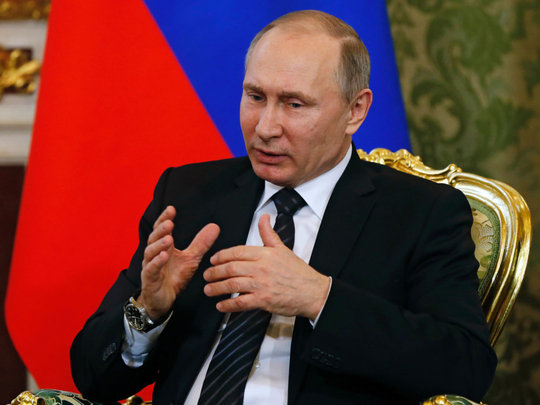
The continuing frenzy in Washington about contacts between members of United States President Donald Trump’s team and Russia has diverted attention from the first real test of the new US president’s campaign pledge to improve relations with Moscow. Thursday saw the first formal meeting between senior officials on either side, when the US Secretary of State, Rex Tillerson, sat down for talks with his Russian counterpart, Sergei Lavrov, on the sidelines of a G20 foreign ministers gathering in Bonn.
From the neutral venue — the former West German capital that has transformed itself into a tranquil diplomatic hub — to the participants, who are both veterans in their particular fields, it would appear that the risk of unpleasant surprises has been minimised (though it is hard to be quite so confident these days).
The diplomatic caravan was then scheduled to move on to Munich for the annual security conference, where participants will doubtless recall that it is exactly 10 years since Russia’s President, Vladimir Putin, used that forum to lambast the West, and specifically the expansion of Nato. It is also where former US president Barack Obama’s vice-president, Joe Biden, first proposed the ill-fated “reset” with Russia two years later.
Now it will be the former oil executive, Tillerson, trying his hand at repairing Russia relations, after what has been by any standards a difficult decade. These first contacts, while deliberately low-key, will be crucial in setting the tone. A thaw with the Kremlin was one of the most consistent, and — it turns out — most controversial, aspects of Trump’s presidential campaign. The resignation of Michael Flynn, after less than a month as America’s national security adviser, exposed just how much suspicion there is in Washington towards normalisation with Moscow. There will be plenty of people willing any rapprochement to fail, preferably at the first hurdle.
Trump’s determination to stick to his Russia policy — one of the areas where he has not wobbled since his inauguration — suggests that Tillerson was under instructions to find out where there might be common ground and do nothing that would thwart progress at this early stage. All the signs are that Lavrov, a cautious diplomat of vast experience, also had instructions that were very similar.
For a while, most of the attention has been on Washington and during what seems like months of non-stop recriminations over Russian ties, the interests of Russia and Putin in better relations with the US have tended to be ignored. The widespread assumption has been that the Kremlin favoured Trump from the outset and did its utmost, by fair means and foul, to help secure his victory.
Leaving aside the highly questionable nature of the evidence for this, all the signals coming out of the Kremlin are that Russia wants an improvement in relations at least as much as Trump does, and possibly even more. One of those signs was Putin’s decision not to order any tit-for-tat retaliation for the diplomatic expulsions ordered by Obama in the dying days of his presidency. Another is the extreme caution with which Moscow has approached its dealings with Washington since Trump’s election. It has been very careful not to say or do anything that would jeopardise any overture from the new administration. Such reticence suggests that Putin has at least as much political capital invested in a reset with the US as does Trump — and far fewer options if it fails.
These may be perilous times for the new US president, but the risks for the Russian president in seeking new terms of engagement with the US may well be greater.
— Guardian News & Media Ltd
Mary Dejevsky is a writer and broadcaster.








